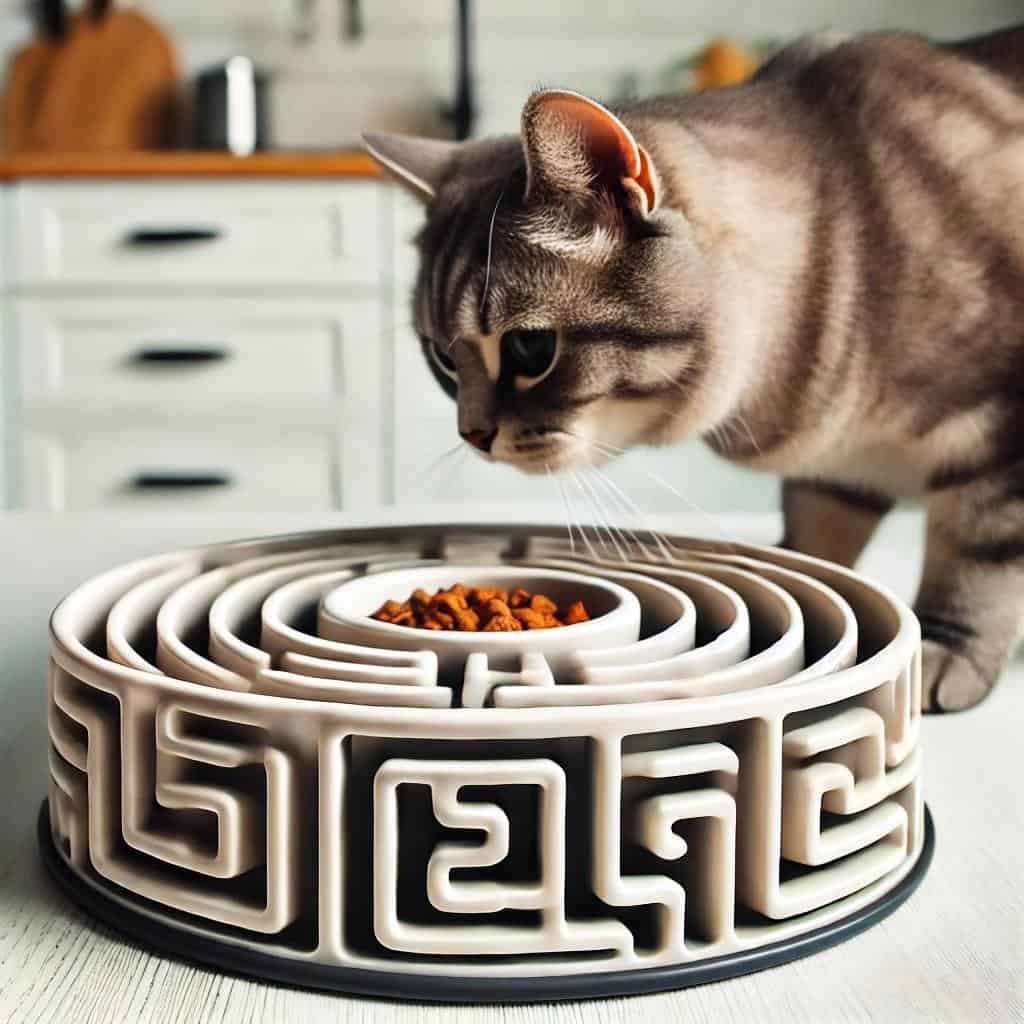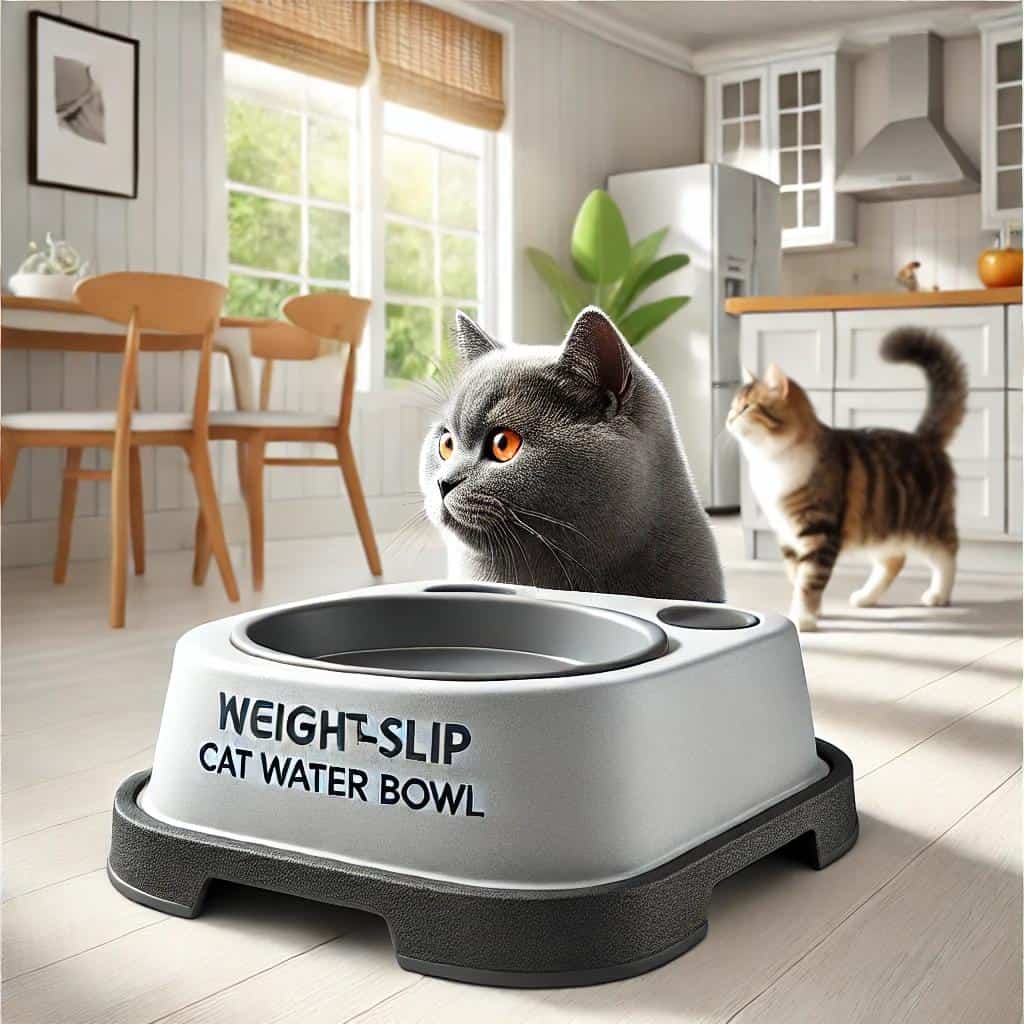Cat Bowls: Finding the Perfect Fit for Your Feline Friend
Introduction

Every cat owner knows the importance of feeding time for their feline companion, and while it may seem like a simple task, choosing the right cat bowls is more significant than you might think. From the type of material used to the design of the bowl itself, each factor can influence your cat’s eating and drinking experience. In this comprehensive guide, we’ll explore the different types of cat bowls available, answer key questions such as “What are the best bowls for cats?” and “How can I stop my cat from spilling water bowls?”, and provide practical tips for choosing the best bowl for your pet.
We’ll also dive into specialty products like the slow feeder cat bowl and solutions for preventing spills. With the right information, you can find the perfect cat bowls that keep your kitty healthy, hydrated, and happy.
Why Do Cats Love Bowls?

Before we get into the best types of bowls for cats, let’s first address an amusing phenomenon: why do cats love bowls? You may have noticed your cat trying to fit into bowls of all shapes and sizes. Cats love enclosed spaces because it makes them feel safe and secure. It’s a natural instinct to seek out spots where they feel protected, and bowls mimic the feeling of being in a cozy, enclosed space.
But when it comes to eating, a cat bowl serves a more practical function. It’s the vessel that holds your cat’s food and water, and choosing the right one can affect everything from how much your cat enjoys mealtime to how well they hydrate.
What Are the Best Bowls for Cats?
When selecting the best cat bowls, there are several factors to consider. The material of the bowl is one of the most important aspects. Here are the common types:
- Ceramic Cat Bowls: These are a popular choice due to their weight and durability. Ceramic bowls are heavy enough to stay put, preventing your cat from pushing them around. Plus, they’re usually dishwasher safe and come in a variety of designs.
- Stainless Steel Cat Bowls: Stainless steel bowls are another excellent option because they are non-porous, making them easy to clean and resistant to bacteria. They are also durable and won’t chip or crack like ceramic bowls might.
- Plastic Cat Bowls: While plastic bowls are inexpensive, they are generally not recommended for cats. They can develop scratches over time, harboring bacteria, and some cats may develop an allergic reaction to the plastic material, leading to issues like feline acne.
For most cats, the best bowls will either be ceramic or stainless steel. These materials are not only safe but also durable, ensuring that the bowl will last and that your cat will have a comfortable eating experience.
What Kind of Bowls Do Cats Prefer?
When it comes to the shape and design, cats tend to prefer bowls that are shallow and wide. This is because deep, narrow bowls can cause whisker fatigue, where the sensitive whiskers of a cat touch the sides of the bowl, making mealtime uncomfortable.
If you notice your cat hesitating to eat or drinking less than usual, the shape of the bowl could be the issue. A wider, shallower bowl can help your cat eat and drink more comfortably, without their whiskers brushing against the sides.
Do Cats Prefer Low Bowls?

In addition to preferring wide, shallow bowls, many cats also like their bowls to be low to the ground. Cats are natural hunters, and in the wild, they prefer to eat in positions where they can see their surroundings. Low bowls offer a sense of control and safety while eating, allowing them to observe what’s going on around them.
However, some cats, especially older ones or those with arthritis, may benefit from an elevated bowl. These bowls lift the food to a more comfortable height, reducing strain on the cat’s neck and spine. Elevated bowls are particularly useful for cats with digestive issues, as they can help prevent regurgitation by making it easier for food to travel down to the stomach.
How Many Bowls Does a Cat Need?
At a minimum, your cat needs two bowls: one for food and one for water. This helps maintain cleanliness, as food particles can end up in water if both are placed in the same bowl.
For multi-cat households, it’s often recommended to provide more than one water bowl to avoid any territorial disputes. Some cats may even prefer having food and water bowls in different locations, as this mimics the behavior of hunting in the wild where food and water sources are often separated.
Specialty Cat Bowls: The Slow Feeder Cat Bowl

If your cat tends to eat too quickly and you’re concerned about issues like choking or vomiting, a slow feeder cat bowl could be the solution. These bowls are designed with ridges or mazes that force the cat to eat more slowly by working around obstacles to get to the food.
Eating too quickly can lead to a variety of health issues, including weight gain, digestive problems, and vomiting. The slow feeder bowl encourages your cat to take smaller bites and chew their food properly, improving digestion and reducing the risk of overeating.
How to Stop Your Cat from Spilling Water Bowls

Some cats have the curious habit of pawing at their water bowls or even tipping them over. If this is the case with your feline, there are a few steps you can take to prevent spills:
- Weighted Bowls: Heavy ceramic or stainless steel bowls are harder to tip over, making them ideal for cats that like to play with their water.
- No-Slip Bowls: Some bowls come with rubber bottoms or silicone mats to prevent slipping and sliding across the floor.
- Fountain-Style Bowls: Cats are naturally attracted to running water, and a water fountain for pets can often reduce the temptation to play with a stagnant water bowl. Many cats prefer drinking from moving water, which also encourages them to stay hydrated.
By addressing your cat’s natural behavior and providing the right tools, you can significantly reduce the likelihood of spills and messes during water breaks.
Conclusion: Finding the Perfect Cat Bowl for Your Feline

Choosing the right cat bowls is about more than just picking something that holds food and water. It’s about ensuring that your cat is comfortable, safe, and healthy during mealtime. Whether your cat prefers low, shallow bowls or needs an elevated setup, the right bowl can make a world of difference.
Consider investing in high-quality materials like stainless steel or ceramic for durability and hygiene. If your cat eats too quickly, a slow feeder cat bowl can help slow them down, promoting better digestion. And if your cat likes to play with their water, a weighted or no-slip bowl can prevent messes.
Ultimately, the best bowl is the one that fits your cat’s specific needs, habits, and preferences. With this guide, you’ll be well-equipped to provide your feline with the perfect dining experience.
External Links:
PetMD – Cat Food Bowls
Insights into the types of bowls best suited for cats, including materials and sizes.
The Spruce Pets – Best Cat Bowls
Reviews and recommendations for the top cat bowls on the market.
Chewy – Cat Bowls – A selection of various cat bowls available for purchase.
Petco – Cat Feeding Bowls – Explore feeding bowls designed specifically for cats.
Related Posts:
The Enchanting Persian Cat
Discover the charm and beauty of Persian cats, their unique traits, and what makes them such delightful companions.
Learn More
The Modern Cat Tree
Explore stylish and functional cat trees that cater to your feline friend’s climbing and lounging needs.
Learn More
The Purrfect Guide to Cat Plushies
Find out why cat plushies make ideal companions for your furry friend and how they can enhance your pet’s playtime.
Learn More
Thank you for reading Cat Bowls, What do you love most about these companions?
Share your thoughts in the comments below! If you enjoyed this post, consider subscribing to our newsletter for more pet tips, stories and blogs!
